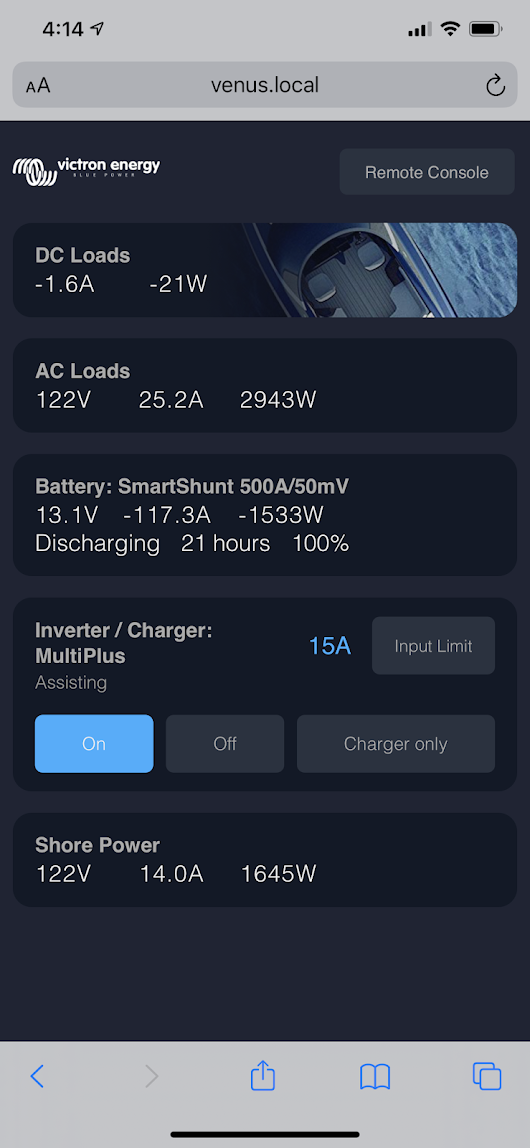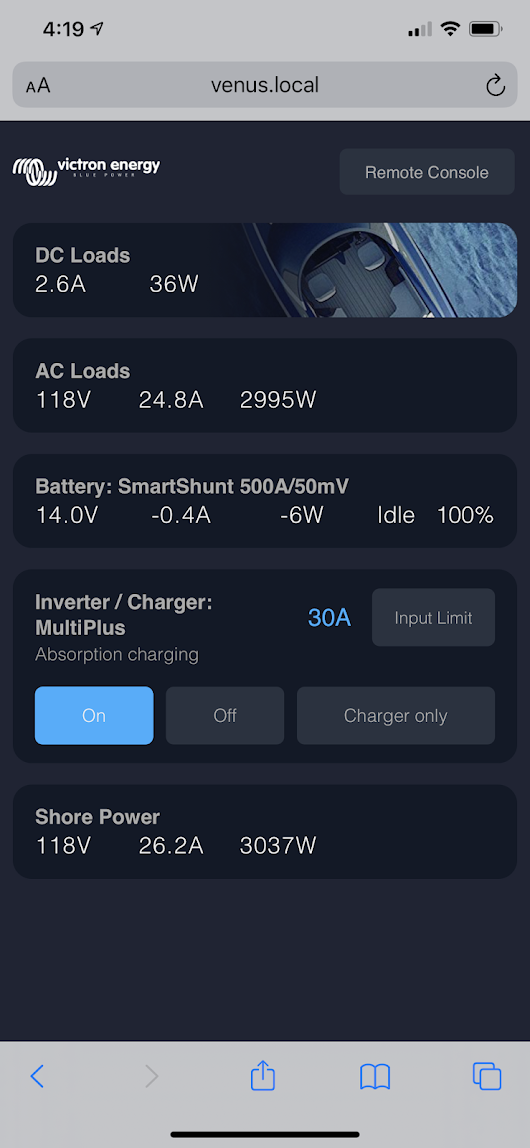I have a 12/3000/120 MultiPlus and I'm trying to understand some Overload issues that I'm experiencing and wondering if the Boost Factor is potentially causing the issue.
Setup is as follows:
Input Limit: 30A
Power Assist: Enabled
Boost Factor: 2.0
UPS: Disabled
Input Power: 4500W Inverter Generator (3800W running)
I've noticed when a large load comes online that the MP will overload and disconnect. I also get an error from my EMS that the voltage has gone "out of spec" (sadly it doesn't tell me which way). What is interesting is that the load is under the 30A input limit and can easily be handled by the generator alone. I'm wondering if the MultiPlus is "preparing" to power assist approximately 7200W (Boost Factor * Input Limit) and causing the overload itself?
If I set the MP to "Charger Only" the Generator can handle these loads just fine. So it seems to be something specific to Power Assist causing the issue. I do plan on turning down the Input Current and running this same test to see if Power Assist successfully assists without disconnecting but I haven't ran this test yet.
Should I lower the Boost Factor down to 1 (or maybe even lower) to stay within the 3000W that the MP can provide? Is there anyway to configure this so that it is not reliant on the input limit? For instance if I'm connected to 15A power I would want a higher boost factor.
Thank you!
Jared



